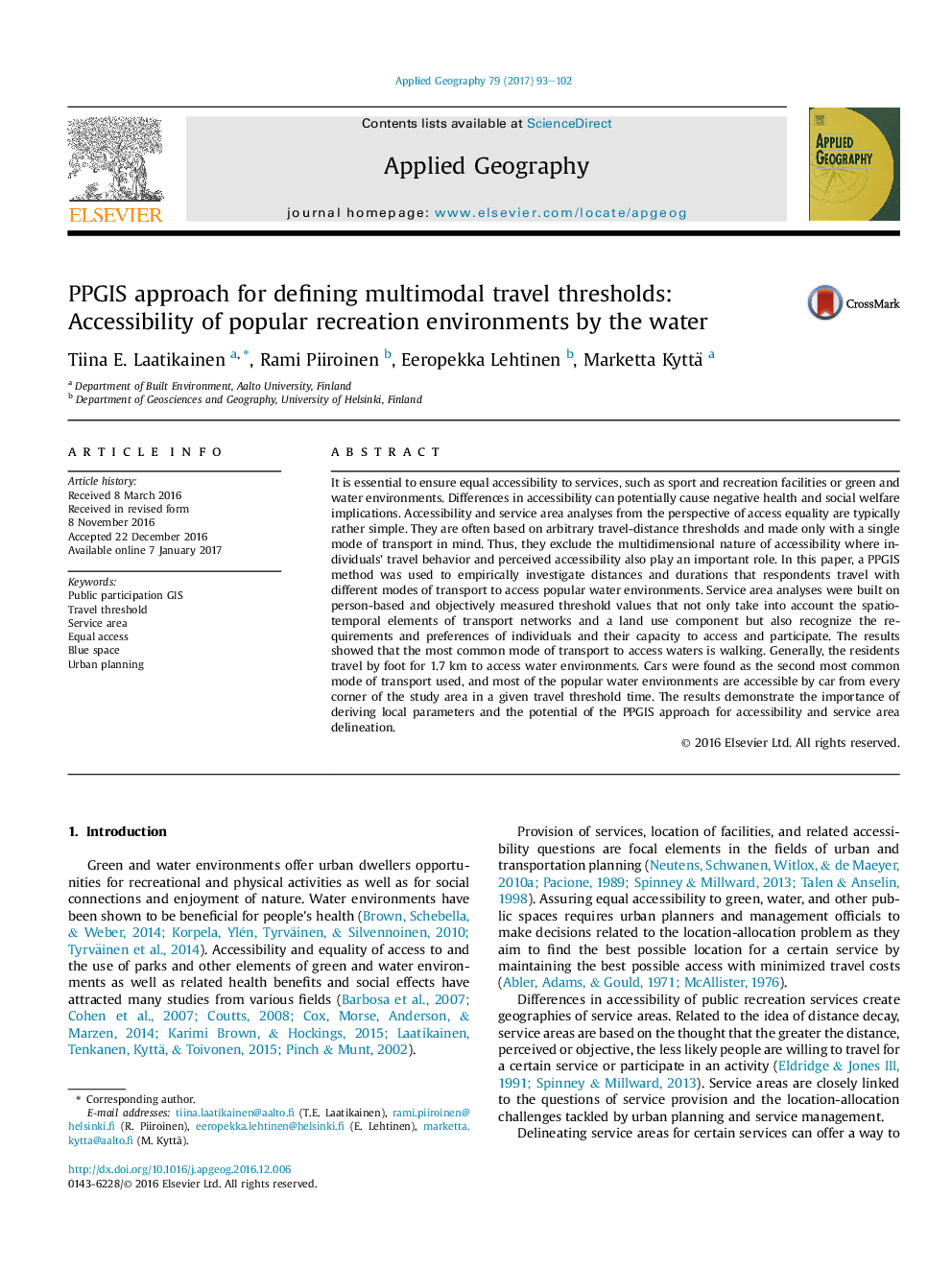| کد مقاله | کد نشریه | سال انتشار | مقاله انگلیسی | نسخه تمام متن |
|---|---|---|---|---|
| 6458427 | 1421038 | 2017 | 10 صفحه PDF | دانلود رایگان |

- PPGIS provides versatile knowledge for the research on the service area delineation.
- The most popular mode of transport to access waters was walking.
- Walking distances and times were rather long, in general 1.7Â km and 24Â min.
- Threshold values should take into account local travel conditions and characteristics.
- Presented results can support urban waterfront development and marine spatial planning.
It is essential to ensure equal accessibility to services, such as sport and recreation facilities or green and water environments. Differences in accessibility can potentially cause negative health and social welfare implications. Accessibility and service area analyses from the perspective of access equality are typically rather simple. They are often based on arbitrary travel-distance thresholds and made only with a single mode of transport in mind. Thus, they exclude the multidimensional nature of accessibility where individuals' travel behavior and perceived accessibility also play an important role. In this paper, a PPGIS method was used to empirically investigate distances and durations that respondents travel with different modes of transport to access popular water environments. Service area analyses were built on person-based and objectively measured threshold values that not only take into account the spatio-temporal elements of transport networks and a land use component but also recognize the requirements and preferences of individuals and their capacity to access and participate. The results showed that the most common mode of transport to access waters is walking. Generally, the residents travel by foot for 1.7Â km to access water environments. Cars were found as the second most common mode of transport used, and most of the popular water environments are accessible by car from every corner of the study area in a given travel threshold time. The results demonstrate the importance of deriving local parameters and the potential of the PPGIS approach for accessibility and service area delineation.
Journal: Applied Geography - Volume 79, February 2017, Pages 93-102